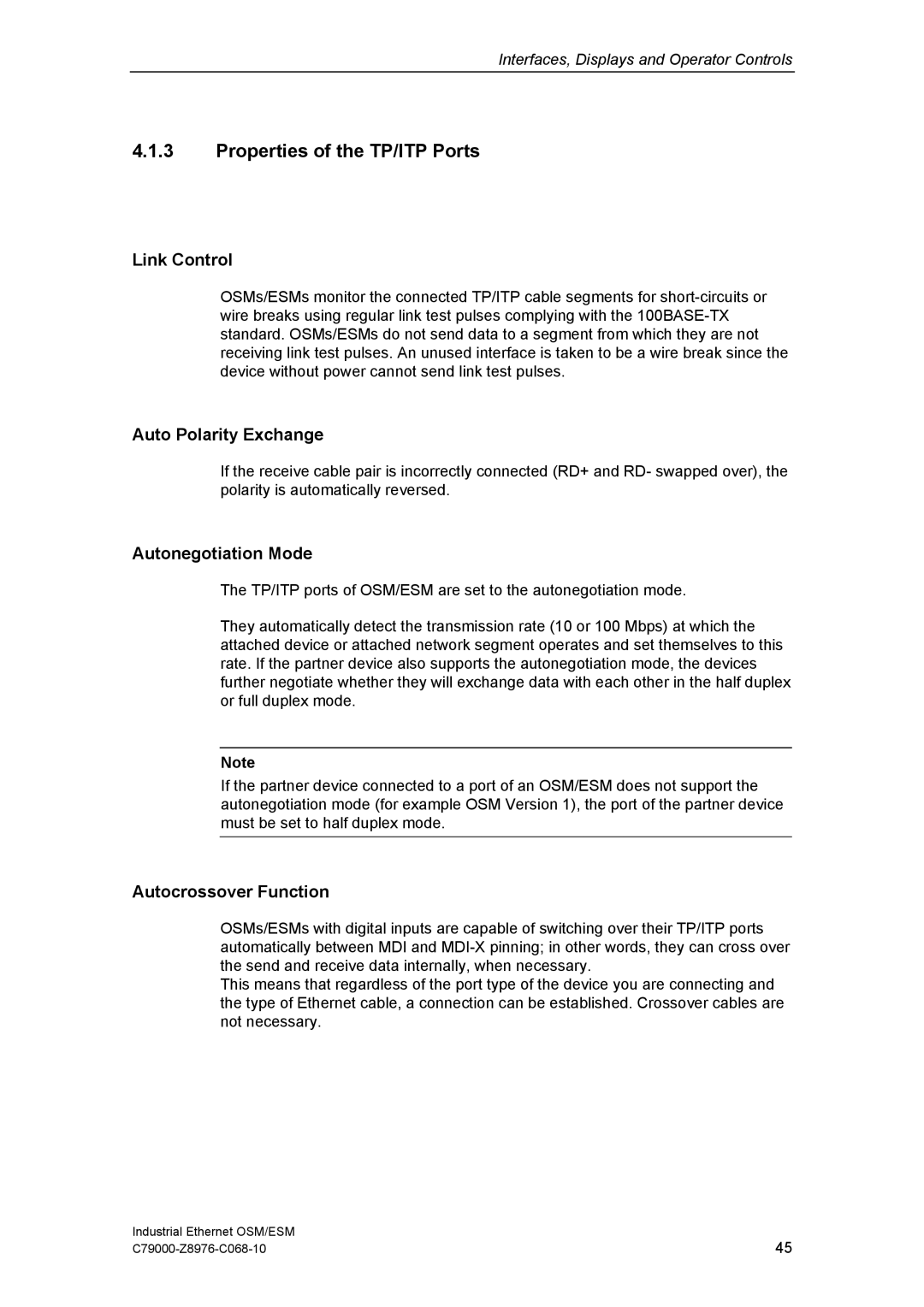
Interfaces, Displays and Operator Controls
4.1.3Properties of the TP/ITP Ports
Link Control
OSMs/ESMs monitor the connected TP/ITP cable segments for
Auto Polarity Exchange
If the receive cable pair is incorrectly connected (RD+ and RD- swapped over), the polarity is automatically reversed.
Autonegotiation Mode
The TP/ITP ports of OSM/ESM are set to the autonegotiation mode.
They automatically detect the transmission rate (10 or 100 Mbps) at which the attached device or attached network segment operates and set themselves to this rate. If the partner device also supports the autonegotiation mode, the devices further negotiate whether they will exchange data with each other in the half duplex or full duplex mode.
Note
If the partner device connected to a port of an OSM/ESM does not support the autonegotiation mode (for example OSM Version 1), the port of the partner device must be set to half duplex mode.
Autocrossover Function
OSMs/ESMs with digital inputs are capable of switching over their TP/ITP ports automatically between MDI and
This means that regardless of the port type of the device you are connecting and the type of Ethernet cable, a connection can be established. Crossover cables are not necessary.
Industrial Ethernet OSM/ESM | 45 |
